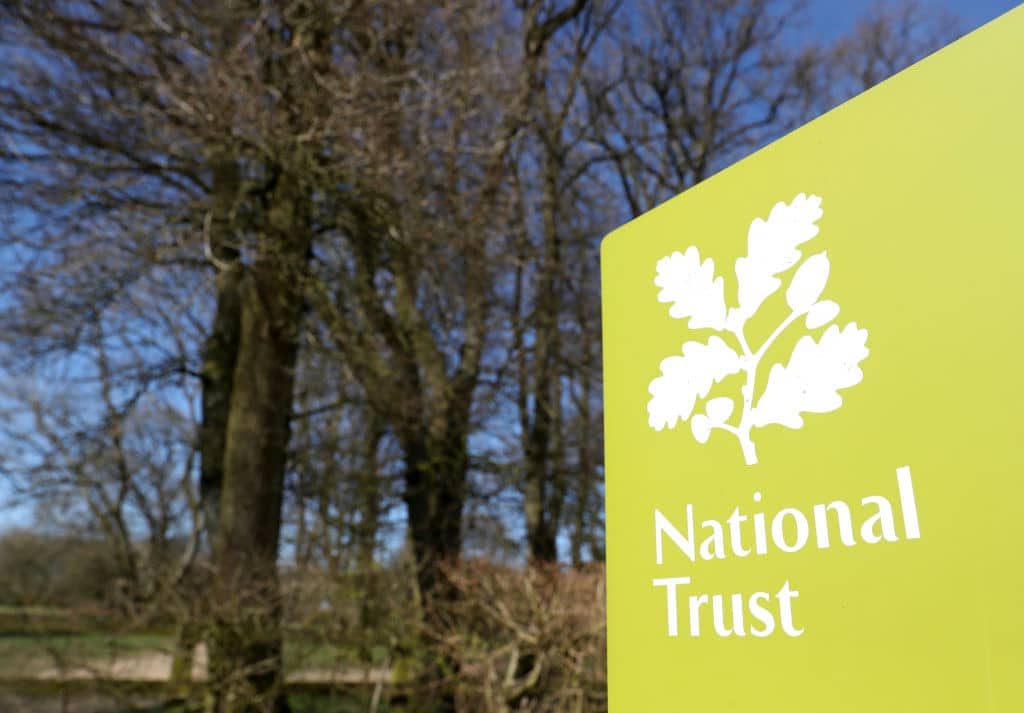The National Trust has, thank God, appointed a new chairman. What can he do to restore trust in an organisation that has so catastrophically dumbed down and become so woefully political in recent years?
Rene Olivieri is an American-born former publishing executive. He has been interim chairman of the National Lottery Heritage Fund, the RSPCA and the Wildlife Trusts and is a board member of the government’s Culture Recovery Fund. His statement on being appointed had a few subtle, encouraging signs that he might stop the dumbing-down, politicising rot.
Olivieri said:
‘As a charity and national institution with a 126-year history, it’s uniquely placed to recognise the debt to the generations that have gone before and its responsibility to those which follow.’
That seems to show that he understands his job: to preserve the extraordinary houses, collections and landscapes the National Trust owns. The job is easy to define – but hard to carry out when, for 20 years, the Trust has done its best to dumb down its houses and run its disastrous political campaigns.
Olivieri should remove any sign that isn’t absolutely crucial in telling you the history of a property
Here’s what Olivieri can do to return the National Trust to the wonderful organisation it was for the first century of its existence.
First, he should visit one National Trust property every day. At each one, he should tear down any sign or remove any literature with spelling mistakes in it. At Hughenden House, Buckinghamshire, the home of the great Benjamin Disraeli, they even managed to get the spelling of his father’s name wrong.
While he’s at each property, he can also remove any signs with kiddy language in them. A tree stump at Hughenden has a sign next to it, saying, ‘Please do not climb on me’. At Cliveden in Buckinghamshire, work on the South Terrace was fitted around the bats’ hibernation cycle. The moronic sign said:
‘Can you believe everything has to be scheduled around this sleepy little chap and his friends?’
In fact, Olivieri should remove any sign that isn’t absolutely crucial in telling you the history of a property – or telling you the way to the loos. The mad proliferation of signs at Trust houses has turned them from magical places, full of ancient mystery, into dull, lifeless, imagination-free spots.
Private houses – such as Blenheim and Chatsworth – haven’t dumbed down, gone political or put up thousands of signs. They’re prospering like never before – and they retain their ancient magic.
To be fair to Rene Olivieri, he has a difficult juggling act to do. He must at one and the same time stamp out the dumbing down in the properties – and yet let the properties, in the long run, look after themselves, free of central Trust diktat.
One of the problems with the Trust is that, not least thanks to all that signage, there’s a creeping universal feel to all the properties. The same dim messages are pumped out, irrespective of the property involved, from a massive country house to the smallest cottage.
That created the catastrophe of the Trust’s recent initiatives on LGBT issues and slavery. Blanket campaigns were decreed from central management – and the results were disastrous.
At Felbrigg Hall, Norfolk, volunteers were told to wear LGBT lanyards. The owner, Robert Ketton-Cremer, who’d given Felbrigg to the Trust was outed as gay. He was long dead and unable to have his say. His family and friends weren’t properly consulted. Olivieri could start to show some appreciation from the Trust to the kind people, such as Ketton-Cremer, who donated their exceptional houses.
A similar centralisation happened in the slavery and colonialism campaign. There’s nothing wrong with curators at individual properties, with particular slavery connections, deciding to put on related exhibitions. At Harewood House, the privately-owned Yorkshire house, Lord Harewood did exactly that, acknowledging that the family’s fortune and his house were built on the proceeds of slavery.
Instead, the central management of the Trust ordered a nationwide survey by academics. The resulting campaign was clumsy and badly written.
Were members asking for these campaigns? It seems unlikely. Most of them want to visit a lovely house or go for a walk in a sublime landscape – and perhaps visit an exhibition that’s particularly relevant to the house. They never asked for a Trust-wide campaign that hits them over the heads with low-grade prose at every property they go to.
The answer is to employ intelligent curators who adore the property they’re working at – and either get rid of the ones who aren’t up to the job or, in time, let them retire.
The Trust could also learn something from Thomas Carlyle’s House in Chelsea. Linda Skippings was the custodian there for 20 years. A highly intelligent, devoted woman, she made Carlyle’s House the model of an interesting property to visit – full of interesting captions about Carlyle and his house. She has been made redundant and the house has been closed since April.
The first thing Rene Olivieri should do is reopen Carlyle’s House, employ Linda Skippings again – and make sure there’s a Linda Skippings in every Trust property in the country.






Comments